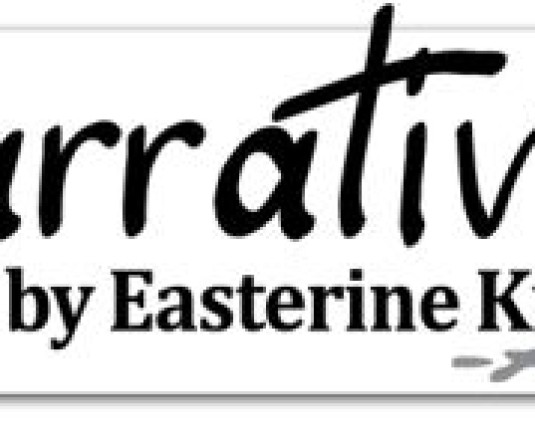
Battle For The Ballot
“Unity In Uniformity” Or “Unity In Diversity”
Dr. John Mohan Razu
Professor, Social Ethics,
CTC, Mokokchung
Indian democracy is inexorably moving towards the politics of identity which represents and upholds the interests of specific religious, ethnic, caste, linguistic and minority groups. This appears as a natural outcome of a democratic process. People belonging to different groups and communities become conscious of their identities; of their rights, and aspirations. Interestingly, national identity in recent times is pushed and promoted because it has the capacity to subsume multiple identities within the gamut of “patriotism”. Over and above, ‘nationalism’ is increasingly being used as an integrating principle to unify the diverse identities. The convergence of these identities in recent times is constructed in the name of patriotic nationalism, invoking Hindustan, Hindu pride and thus equating to ‘national identity’ which implies ‘majority identity.’ In the wake of 2014 Parliamentary Election this concept is widely and subtly used under the aegis of Modi, who has been designated as the Prime Ministerial candidate by the BJP.
For us nation comes first, and then nationalism. What do we do with nationalism without a nation? However, nationalism as a concept has the tendency of taking extreme forms leading to dangerous and alarming proportions. For example, fascism in Nazi Germany deeply entrenched in ethnic cleansing and liquidation of identities.’ Likewise, the BJP’s Hinduised version of nationalism could lead to anti-Semitism. ‘Nationalism’ is like cancerous cells that have been resurrected in the wake of extreme ultra-rightist ideology viz., Hindutva. The term Hindutva, means ‘’Hinduness,’’ which simply denotes Hindu nationalism. To realize, Hindutva as a political project BJP exhorts everyone to come under its umbrella of ‘nationalism’ meaning “Hindu” that does not characterize plurality. Interpretation of this highly loaded word “Hindutuva” as “a way of life” is just a sugar coat, but latent motif is something else..
In contemporary India, BJP’s mode of Hinduism has become the dominant identity. It is consolidating its identity by subsuming other identities. The emergence and rise of Modi is perhaps the most striking feature of contemporary Indian politics. Though the ideology of Hindutva is a recent phenomenon, it is founded and constructed on ‘Hindu nationalism.’ Its political project is creating a “Hindu Raj” comprising of homogenous identities”. In the process of homogenization, it hegemonises the interests of certain castes and classes. The ideology of Hindu nationalism being an ideological tool absorbs, assimilates, articulates as well as rewrites, reinterprets and reconstructs the nation’s history in furthering its agenda of ‘one nation,’ ‘one culture,’ ‘one language,’ and ‘one religion.’
The Hindutva forces, in order to consolidate its social control, launched a process of standardization of Hindu law to categorize and exclude all those who could not be considered on the grounds of Christian, Muslim, and other religious minorities. In addition, the Hindutva hegemony has launched the census as a categorization device wherein the lower rungs of the social ladder, i.e., castes and communities, are given the option to clearly identify themselves as one or the other. They are posing as a homogenous ‘Hindu’ community by pretending that they have transcended the caste divides so that the other identities such as the Dalits and the Tribals who practice their own particular religious beliefs be brought under the category of ‘Hindu.’
The Hindutva forces vertically homogenized the upper and other backward castes (OBCs) and classes, and are gradually moving into the terrains of the Dalits and Tribals to push the logic of majoritarian democracy furthering their own interests in the name of Hindu. At the same time, the large scale conversions of Dalits to Christianity and Islam, escaping from the tyranny of the Brahminical social system poses grave threats to upper caste hegemony. Dalits and Tribals are lured to re-convert to Hinduism as part of a pan-Indian raj. The construction of a nation based on an ideology of Hindutva in its definition, consolidation, and articulation underlines ‘Hinduness.’
For the past two decades a series of assaults and killings of Christian priests, school principals, rape and molestation of nuns, burning and bombing of churches, distribution of highly provocative and communal literature, reconversion drives and the bid to saffronise educational institutions and school text books, clearly portrays a well-planned strategy and systematic execution by the Hindutva brigade in all the BJP ruled states. What happened in 2002 in Gujarat for the Muslims and in Kandamal for the Dalits are still simmering amongst those who last their dear and near one. By resorting to violent means and methods, the Hindu communal outfits have gradually been consolidating their base amongst the Dalit and Tribal Hindus. The ideology of Hindutva ‘represents all departments of thought and activity of Hindu fanaticism’.
For the Hindutva forces, India is a Hindu nation in which Hindus alone are the true sons/daughters of the soil. It is engaged in bringing about ‘’one nation, one people, one religion, one language, one culture and one executive.’’ And Modi belongs to aggressive Hindutuva stream who is all set to translate the ultimate vision of BJP, if he gets elected. There is no doubt that “If” he gets elected it is a disaster to the whole nation. ‘’Hinduness’’ seeks to establish the political, cultural and religious supremacy of Hinduism and the Hindu nation. Therefore, Hindutva as an ideology provides common identities i.e., social, cultural, political and religious, to its fold, and thus polarize and consolidate Hindus and others to reconvert. And those who belong to other religions such as Christianity and Islam, are given the identities such ‘’aliens,’’ ‘’infiltrators,’’ ‘’aggressors,’’ and ‘’enemies.’’
What is happening currently in India particularly in the locales of Muslims and Christians, Dalits Chrstians and Christian Tribals has a close parallel in history. Drawing parallels from history is important as we face planned and systematic attacks by the forces of Hindutva. The horrendous and darkest blot in the history of the twentieth century was fascism under Adolf Hitler. It has been succinctly explained:
“How essential anti-Semitism was to the Nazi party program from the very beginning. Already in 1920, claims were made that only those of German blood, i.e., those who belonged to the Aryan (German) race, could be considered and claim rights as citizens. Others, such as the Jews, could only be regarded as guests and came under law for foreigners. In a private letter written by Hitler in 1919 he made it clear that the anti-Semitic rationale envisaged the planned elimination of all rights of the Jews”
On the basis of the above quotation, Hitler and his party had translated the ideology of fascism in the following way:
A program of ‘’Aryanization’’ led to the expropriation of Jewish property and its transfer into suitably Aryan hands. Schools and universitie
s expelled Jewish students, Jewish families became subject to house searches and individuals subject to arrest, Jewish stores were defaced, and Jews were required to take the name of ‘’Sarah’’ or ‘’Israel’’ and have the letter J stamped on their identity card ... Nazi thugs smashed windows in Jewish shops and homes throughout Germany, burnt and destroyed almost all synagogues, humiliated and beat countless individual Jews, and arrested ten thousand Jewish men, who were then sent to concentration camps.
On these lines, the main backbone of the BJP, via Sangh Parivar, has always held strong fascination for Hitler’s German paradigm. For example,
In 1940s and 1950s, the boudhik (intellectual discourse) given to the swayamsevaks invariably used to contain a reference to the World War I German plan which was praised as the most brilliant strategic military plan devised by human imagination ... The RSS was unashamedly patterned on Hitler’s Nazi party in ideology, uniform, drills and bands, parades and display of strength, its attitude towards women and minorities and its organisational structure, its principle of one supreme leader and its slogan of ‘one nation, one people, and one culture.’ In fact, the slogans find an honored place in the BJP manifesto. Indeed Guru Golwalkar wrote approving of Nazi action and observed that India must learn from Germany that two cultures and two civilizations cannot co-exist in one nation.
In addition, Golwalkar who was inspired by Adolf Hitler reiterates that, “... Germany has also shown how well-nigh impossible it is for races and cultures having differences going to the root, to be assimilated into one united whole, a good lesson for us in Hindustan to learn and profit by. For Golwalkar, Hitler’s Germany and anti-Semitic stance became tools for pushing the ideology of Hindutva. He was against pluralism and secularism enshrined in the Constitution. Instead, he spoke for nationalism and the preservation of pure Aryan culture engrained in the religion of Hinduism. However, with regard to other religious identities, Golwalkar emphasized that,
The non-Hindu people in Hindustan must either adopt the Hindu culture and language, must learn to respect and revere Hindu religion, must entertain no idea but the glorification of the Hindu nation ... but also cultivate the positive attitude of love and devotion ... they must cease to be foreigners or may stay in the country, wholly subordinated to the Hindu nation, claiming nothing, deserving no privileges, far less any preferential treatment, not even citizen’s rights.
Whatever said in the above quotation is happening now. Hindu communalism is on the rise against the minorities. Vinayak Damodar Savarkar (who coined Hindutva in early 1920), Guru Golwalkar, Swamy Chinmayanand and few more visualized and thus worked out a clear ideology for the ultra-rightists.
Hindutva forces are clear in their strategies and vision. Will Hindutva-backed Modi tolerate other religious identities to co-exist? Apparently the space for plural identities to co-exist with the majority is gradually shrinking. Take the State of Gujarat and a spate of attacks against the minorities. Under the leadership of Modi all these have happened. Currently, the conflict could perhaps be intellectual, political or ideological or whatever it may be but is clearly between “Unity in Uniformity” and “Unity in Diversity”. The communities who are increasingly under threat and under surveillance are Christians, Muslims, the Dalits and the Tribals. The very identity (religious) Christian or Muslim means ‘’alien,’’ ‘’foreigner,’’ ‘’infiltrator,’’ ‘’unpatriotic,’’ and ‘’disloyal.’’ In order to get one’s equal rights, original identity is to be restored (before conversion) which they consider to be Hindu. It presupposes one’s conversion to Hinduism. They say that Christianity is a Western religion. Therefore, the Christians should emigrate to the west. The options they pose to Christians are clear. Either reconvert or leave. The multiple identities that all of us that we thus far+ cherished should be transformed into Hindu identity.
The forces behind Hindutva ideology are trying to unite Hindus against Christians and Muslims. The Hindutva-constructed Hinduism revolves around Brahminical orthodoxy which centers its authority on Vedas and Sastras. The religions of the Dalits, Tribals and subalterns do not subscribe to these. The Brahminic Hinduism is all out to centralize, hegemonise and subsume the existence of other streams, identities, belief systems and practices. In such a situation co-existence of multiple identities and their belief systems would come under attack. What should be the response of Christians and the churches? Once again I would like to draw a parallel between the German churches during Hitler’s Nazi Germany and the churches in India as of now. The scenario was,
Many Christians welcomed Hitler’s coming to power, and regarded it as a God willed change. They also felt reassured by his anti-Communist policy. The Catholics, who had so far been second class citizens, now felt proud to be fully accepted.
Hitler wanted to use the churches for the purpose of creating a Nationalist Socialist religion. Any nationalistic system needs religious fervour. So they adulterated Christian religion, cleansed it of all Jewish elements, included a German god and hero Jesus, and even put a picture of Hitler on the altar to be worshipped. Thus many church members and pastors were forced to be in the opposition and learnt how to resist fearlessly the control by the Nazis, the persecution by the Gestapo (the Secret Police) and the ruthlessness of the SS (Hitler’s dreaded elite police force). Though some vehemently opposed Hitler’s specific policies, Christians by and large supported the regime. Particularly a vast majority of Christians failed to raise any objection with regard to Jewish persecution. Germany being a Christian nation, the churches had failed to exert moral authority on Hitler. However, “... the efforts of oppositional pastors and theologians to stop the German Christians from ‘’Aryanizing’’ the Evangelical Church---that is, expelling pastors, church officers, and parishioners with Jewish blood.
The German context then and the Indian content now, portray number of commonalities that bring these two historical epochs much closer. Currently, the churches, cutting across a wide-spectrum, are gripped with fear and horror as opinion polls swings in favor of Modi. The Indian churches (Reformed) now in “wait and watch” mood, but some like the deputy moderator of the CSI who belongs to Syrian community in praise of Modi. The Kerala Churches especially Syrian Churches with their open hands embraced Modi. The behavior of the so-called heads shows the frivolous character of the Church.
The elite and middle-class Christians relatively speaking are not all concerned about the Hindutva menace as evil. The intelligentsia from the Christian community to a large extent failed to out rightly denounce the evils of Hindutva. Some privileged class/caste within the Christian community who have their kith and kin in the west may emigrate the moment the crisis deepens. Who would meet the brunt of the attacks and resist the onslaught of Hindutva? Most probably the poor Christians located on the margins of the cities, the Dalit and the Tribal Christians living in rural settings and those who are committed to a plural society and secular values.
Dietri ch Bonheoffer (1906-1945), an organic theologian and ethicist, a member of the German Resistance, life and faith, i.e., secular and religious, proved that both (life and death) cannot be dichotomized or separated, but rather is intrinsically linked together. In one of his profound statements, when people at large were frightened and crushed under Hitler, Bonheoffer said, ‘’Do not allow disaster to happen, and then tie up the wounds and offer consolation. No, throw yourself into the spokes of the wheel and stop it from turning and crushing those underneath.’’ Bonheoffer accordingly joined the Operation Seven in order to stop Hitler’s ‘Aryanization’ agenda and the racial holocaust and made his position clear especially to the church in the following way:
The situation as of now is no different than that of Nazi Germany. Modi is clear the moment BJP gets the majority in the Lok Sabha and” if” he becomes the Prime Minister the real color of Modi shall unfold. He would be ruthless especially against the Dalits, the Tribals, and the minorities employing force (covert and overt) by following a policy of assimilatarianism. The Hindutva forces have a well-drawn project for these identities. This hyphenated construct posits respect to plural identities and those believe in an inclusive framework. But in our context, the hyphen is posing grave problems for plural identities. The slogan of ‘one nation,’ ‘one culture,’ ‘one language,’ and ‘one religion’ has brought tensions between the Hindutva and other identities.
Modi’s brand of Hinduism will not allow plural identities and other religions to co-exist and be practiced in India. More importantly, aggressive Hindutva brand of Hinduism tends to subsume, integrate and assimilate other identities and belief systems. Secularism is not pseudo. Secularism as a political philosophy or a Constitutional imperative has to be understood as a political frame that allows other religions and identities to co-exist. It is enshrined in the Indian Constitutions, and therefore, mandatory. Therefore, ‘’identity’’ is more than a matter of religion, class and caste.
To respect, to promote and to preserve ‘’plural’’ and ‘’secular’’ identities, what we need at this historical juncture is commitment to a plural-secular framework. Once again we are reminded that Indian democracy survived all these sixty six years is because of secular ideals and fabric that cuts across caste, creed, class and other persuasions. People by and large believe, recognize, and appreciate the notion of “multi-cultural” and “plural pan-Indian ethos”. India is a country for all those who belong to diverse identities.
Modi and his Hindutuva brigade are pushing a theory that “India” is for Hindus because its ethos is premised on Hindu culture. This argument has not been agreed by the electorates and rejected BJP through democratic means. The electorates want their country to be plural, inclusive and diverse. India is known for its confluence of diverse cultures, religious traditions, ethos of live and let-live over hundreds and thousands of years. Ultra-rightists’ fascist ideology of “unity in uniformity” ought to be countered with “unity in diversity”. Even the majority belonging to Hindu do not subscribe to this ideology since plurality and diversity are the foundational ideals of our secular fabric. In such a state of affairs a broad secular forces will have thwart the demonic forces so that the rich plural and secular ideals be saved.





